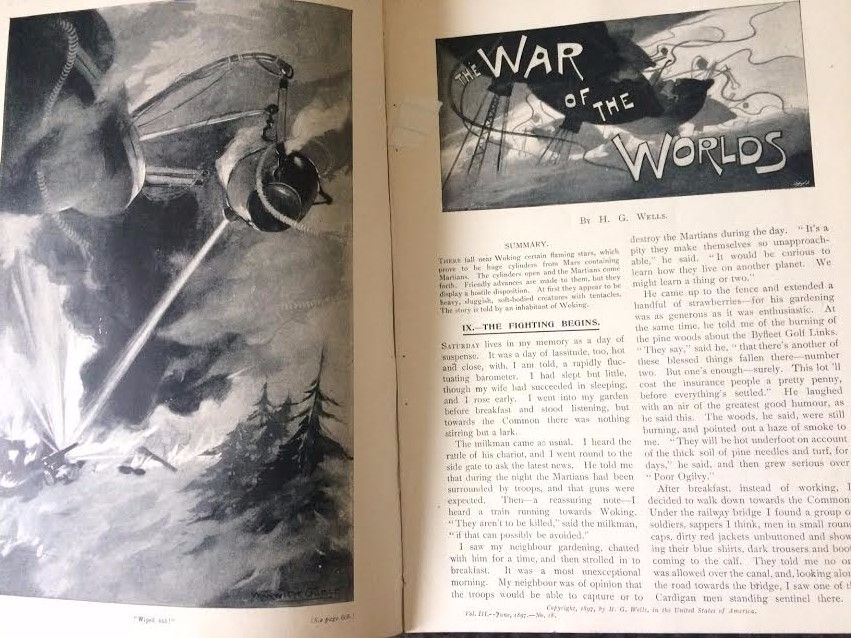War Of The Worlds

H.G. Wells’ The War of the Worlds,a science fiction novel mostly written while he was living in Woking, proved to be one of his most successful works – the book has never been out of print.
Serialised in 1897 by Pearson’s Magazine in Britain and Cosmopolitan in the USA, The War of the Worlds was first published as a book in 1898. Much of the initial action in The War of the Worlds takes place in Woking and nearby villages. The narrator – the person telling the story – lived in Maybury, Woking; most probably on Maybury Hill. Horsell Common, the initial landing site of the Martian invasion force, is an extensive open area close to where Wells was living when writing the story.
In his autobiography he wrote of his pleasure of riding a bicycle around the area and imagining the destruction of specific cottages and houses caused by the Martians’ heat-rays. In a letter to Elizabeth Healey, who had been a fellow student at the Normal School (now Imperial College) in South Kensington, Wells wrote: "I'm doing the dearest little serial for Pearson's new magazine, in which I completely wreck and sack Woking–killing my neighbours in painful and eccentric ways – then proceed via Kingston and Richmond to London,which Isack, selecting South Kensington for feats of peculiar atrocity."
An enduring legacy The War of the Worlds has inspired several feature films and a musical stage show as well as various radio dramas, (most notably Orson Welles’ infamous 1938 radio broadcast), comic book adaptations, video games, television series and dramatised documentaries, and sequels or parallel stories by other authors.
In 1978, Jeff Wayne, an American born composer, produced a bestselling musical album of the story featuring Richard Burton and David Essex, and later in 2006 Wayne launched a musical stage show which played at well-known arenas like London’s O2.
latest adaptation of Wells’ masterpiece was directed by Hollywood heavyweight, Steven Spielberg,in 2005 . Featuring Tom Cruise, Tim Robbins and narrated by Morgan Freeman, the blockbuster reportedly costed an estimated $132 million to produce and netted a worldwide total of $591 million.
“Very early in the morning Ogilvy, who had seen the shooting star and who was persuaded that a meteorite lay somewhere on the common between Horsell, Ottershaw, and Woking, rose early with the idea of finding it. Find it he did, soon after dawn, and not far from the sand pits. An enormous hole had been made by the impact of the projectile, and the sand and gravel had been flung violently in every direction over the heath, forming heaps visible a mile and a half away. The heather was on fire eastward, and a thin blue smoke rose against the dawn. The Thing itself lay almost entirely buried in sand, amidst the scattered splinters of a fir tree it had shivered to fragments in its descent. The uncovered part had the appearance of a huge cylinder, caked over and its outline softened by a thick scaly dun-coloured incrustation … At once, with a quick mental leap, he linked the Thing with the flash upon Mars.”